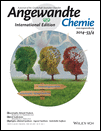Infrared Spectra of Protonated Coronene and Its Neutral Counterpart in Solid Parahydrogen: Implications for Unidentified Interstellar Infrared Emission Bands†
The National Science Council (NSC102-2745-M009-001-ASP and NSC102-2113-M-213-002-MY2) and the Ministry of Education, Taiwan (“ATU Plan” of National Chiao Tung University) supported this work. The National Center for High-Performance Computing provided computer time.
Graphical Abstract
Protonated pyrene and coronene collectively appear to have the required chromophores for the unidentified infrared (UIR) emission bands from interstellar objects, and the spectral shifts on an increase in the number of aromatic rings point in the correct direction towards the positions of the UIR bands. Larger protonated peri-condensed polycyclic aromatic hydrocarbons might thus be important species among the carriers of UIR bands.
Abstract
Large protonated polycyclic aromatic hydrocarbons (H+PAHs) are possible carriers of unidentified infrared (UIR) emission bands from interstellar objects, but the characterization of infrared (IR) spectra of large H+PAHs in the laboratory is challenging. IR absorption spectra of protonated coronene (1-C24H13+) and mono-hydrogenated coronene (1-C24H13.), which were produced upon electron bombardment of parahydrogen containing a small proportion of coronene (C24H12) during matrix deposition, were recorded. The spectra are of a much higher resolution than those obtained by IR multiphoton dissociation by Dopfer and co-workers. The IR spectra of protonated pyrene and coronene collectively appear to have the required chromophores for features of the UIR bands, and the spectral shifts on an increase in the number of benzenoid rings point in the correct direction towards the positions of the UIR bands. Larger protonated peri-condensed PAHs might thus be key species among the carriers of UIR bands.





